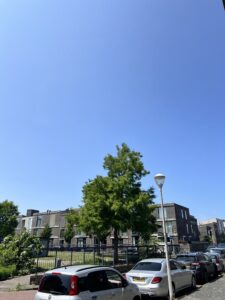From Airbase to Eco-Neighbourhood: The Environmental History of Ypenburg, Meerkoetstraat
June 21, 2025 By: Sunia Khan
Location: Meerkoetstraat, The Hague

Ypenburg, located on the eastern edge of The Hague, has undergone a dramatic ecological transformation over the past century. Originally part of South Holland’s vast peat bog and wetland landscape, the area was shaped by centuries of drainage and farming. Peat extraction, in particular, led to soil subsidence and flooding, turning the land into a patchwork of reclaimed fields managed through dikes and canals.
In the 1930s, the site was developed into Ypenburg Airfield, which played a role during WWII and later served as a Dutch military base. After the airfield was decommissioned in the 1990s, the area was designated for urban housing under the national Vinex policy. Ypenburg’s redevelopment was notable for its integration of sustainable design, especially stormwater retention systems and green corridors that support local biodiversity.
Today, the neighbourhood balances urban living with ecological awareness. Native and migratory birds, such as coots and herons, thrive in retention ponds and green spaces. While invasive species like American crayfish present challenges, municipal efforts help manage them. Ypenburg is now a model of suburban sustainability, where history, water, and nature meet in a carefully designed urban environment.